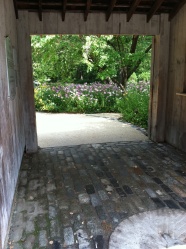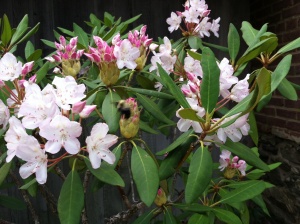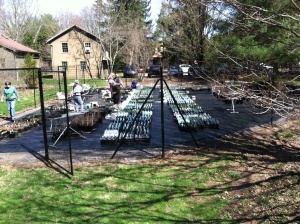If there is one thing we know with absolute certainty about gardening here at the Brandywine Conservancy & Museum of Art is that we love Maine lobster. Oh, and non sequiturs, too. OK, so two things.
We’ve had quite a few heat waves here this summer. So, thoughts of Maine and all it has to offer, including cooler (usually) climes, can be mentally refreshing. The volunteer gardeners here work up an appetite, and usually by around 10 a.m. we find that talking about food can be refreshing, too. The Museum Café is on a roll (more on that later) and a lot of us like to head there for lunch. Great food, great prices, great setting and a great view of Brandywine Creek.
So, when we learned that there would be a Lobster Week at the Café, we took the, um, bait.

On August 18th, we walked out with two containers of lobster chowder– after a hard morning of gardening, for the record. The chowder was spot on. Chunks of sweet lobster, nice potatoes with the skin, corn (don’t even go there, purists) and a velvety broth.
The Conservancy and the Museum, the Wyeths and other featured artists, the employees, the volunteers and the donors–many have strong ties to the great state of Maine. We were pretty sure these would have to be among the best lobster dishes outside of Maine.

On August 21st, back for more. And we weren’t even volunteering that day. Lobster roll was the special. Horticultural Coordinator Mark Gormel was in line. So was Donna Gormel, Director of Volunteers & Events.
We took our roll home and enjoyed it with some leftover French fries from Restaurant Alba. It made us think. That we should have gotten two.
Down East? That would be nice. But we’re just as happy to head Down Chadds Ford for our Maine lobster. All the while thinking we might have to “lobby” for a repeat.
–John O. Buckley
Story and photos



























